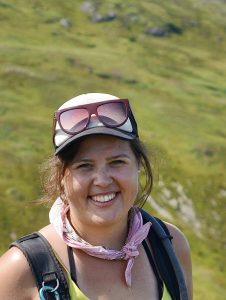CAA News Today
Meet the Inaugural CAA-GOLDEN Scholarship Recipients
posted by CAA — Jun 28, 2022
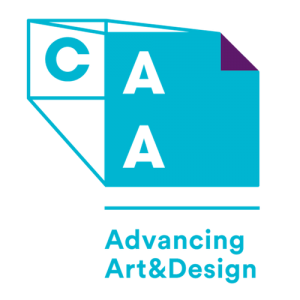

The CAA-GOLDEN Scholarship Program supports artists whose mission it is to give back to their communities through teaching, while nurturing and developing their own talents and capabilities as artists. Funded by Golden Artist Colors, Inc., CAA grants two unrestricted scholarships of $8,000 each on an annual basis to artists with an MFA who are pursuing a career in K-12 education. Grantees will also receive two weeks at the Sam and Adele Golden Foundation Residency Program, $1000 towards GOLDEN products, registration to the 2023 CAA Annual Conference, and one year of CAA membership.
MEET THE GRANTEES
Mick Bodnar
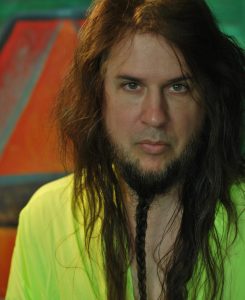
Having grown up between two dairy farms in rural New York State, Mick Bodnar is something of an anomaly in the art world. He has over two decades of experience as a working-class graphic designer. After being displaced from that career, he embarked on a formal education. His collegiate career began at SUNY Broome Community College, where he gained an AS in Visual Communication Arts, and received the BCC Foundation Scholarship for Excellence in Liberal Arts, the Robert R. Cotten II Award in Graphic & Editorial Design, plus the SUNY Broome Second Chance Scholar Award. With those achievements, he was offered a generous scholarship to attend an elite private college. From that institution, Bard College, he earned a BA in Studio Arts, the Studio Arts Award, and the Bard Center for the Study of Hate Fellowship Award. In 2022, he gained an MFA in Painting & Drawing from SUNY New Paltz, as well as the Outstanding Graduate Award in Studio Arts and the Sojourner Truth Fellowship Award. In 2022, he plans to pursue a master’s degree in Art Education from Adelphi University.
Mick is proud that his work to date has been well-received equally by the layman as well as by academics. He believes that art is the purest form of communication between humans, crossing the barriers of time, culture, and language — and that everyone should have access to it, regardless of background. He is committed to making art available to the general population.
Beth Reitmeyer
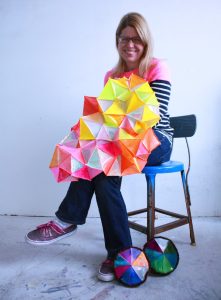
Beth Reitmeyer. Photo by Krystal Henriquez / Assets for Artists.
Beth Reitmeyer is a visual artist based in Nashville, TN who likes to make people happy with her colorful installations. Her work investigates landscapes and the joy of unexpected yet beautiful spaces and places that are discovered as one explores the land and structures within it: clouds, rivers, caves, geodes, stars. These environments allow viewers to explore the land and get to know one another in a more profound way, providing space for renewal and hope for persevering.
Beth was born in Colorado Springs, CO and raised in Louisville, KY. She attended Northwestern University (MFA), The School of the Art Institute (Post Baccalaureate program), and the Pennsylvania State University (BFA). In the fall of 2022, she will be pursuing a Master’s in Education/Teaching at Western Kentucky University or Lipscomb University.
Beth teaches with the Frist Art Museum, Western Kentucky University, Cheekwood Estates and Gardens, and Nashville School of The Arts.
Beth’s work has been exhibited at the Frist Art Museum, Nashville; Elizabeth Foundation for the Arts, New York; OZ Arts, Nashville; 1708 Gallery/Virginia Museum of Fine Arts, Richmond, VA; FIGMENT, Chicago; The Downing Museum, Bowling Green, KY; Kindling Arts Festival, Nashville; Zg Gallery, Chicago; Ground Floor Gallery, Brooklyn, NY; Institute of Contemporary Arts, London. Beth has been an artist-in-residence at The Studios at MASS MoCA, ChaNorth/ChaShaMa Foundation, The Ragdale Foundation, CONVERGE, and Mineral House Media. Recent awards include grants from the Metro Nashville Arts Commission/National Endowment for the Arts and a finalist for a Burning Man grant.
CAA Signs On to Joint Statement of Opposition to Banning Scholars Based on Citizenship
posted by CAA — Mar 16, 2022
CAA has signed on to the Association for Slavic, East European, and Eurasian Studies (ASEEES) statement in opposition to banning scholars based on citizenship. CAA stands by its previous condemnation of Russia’s colonialist aggression and oppression of Ukraine. At the same time, we share concerns about calls for blanket bans on the participation of individual Russians and Belarusians in scholarly events and scholarly exchange. CAA believes that banning Russians and Belarusians based solely on their citizenship goes against our fundamental principles of scholarship, open communication, and dialogue. To read the statement in full, please visit their page.
CAA Signs on to Statement in support of Afghan scholars and students
posted by CAA — Feb 03, 2022
CAA has signed on to the statement released by the Middle East Studies Association on February 3, 2022. Addressed to President Biden, Secretary of State Blinken, and Secretary of Homeland Security Mayorkas, it seeks immediate action in enabling the safe and speedy relocation of Afghanistan’s students and scholars to the United States. Due to shortcomings in existing visa requirements, it calls on the government to create a dedicated visa category for Afghan scholars and students to allow for travel. To read the statement in full, visit the Middle East Studies Associations website.
Meet the 2020 Student Scholarship Winners
posted by CAA — Jan 28, 2020
with support from

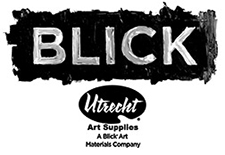
For the fourth year in a row, CAA is proud to partner with our sponsors, multinational publisher, Routledge, Taylor & Francis, and art materials specialist, Blick Art Materials, on student scholarships to assist CAA student members with conference costs.
Routledge, Taylor & Francis Student Scholarship
CAA Annual Conference Premier Sponsor, Routledge, Taylor & Francis supports four CAA student members with a $250 scholarship. The 2020 winners are:
Samara Johnson
Samara Johnson holds a BFA in Painting and Drawing, BA in French from Sonoma State University, and in May 2020 will complete her MFA in Painting and Drawing from University of Colorado at Boulder. She was born and raised in Moose Pass, Alaska. Her upbringing has inspired her to create artworks that involve use of organic materials and synthetic skins, which brings backwoods aesthetic into a contemporary setting through abstracted dimensional wall works. The artist also volunteers as a horse handler for equine assisted psychotherapy in Boulder, Colorado, which has allowed her to explore, in her work, how systems and relationships of the non-human can help humans better understand their nervous systems and emotions.
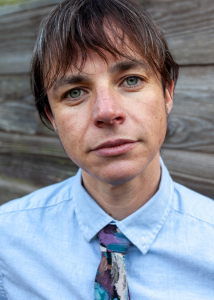
Jordan Reznick
Jordan Reznick is an artist and PhD candidate in Visual Studies at University of California Santa Cruz. Their dissertation, “Settler Modernism: Alfred Stieglitz’s The Steerage and the Vicissitudes of American Whiteness, 1890-1930″ traces how one iconic photograph came to be known as the first modernist American photograph and how, at each stage of its trajectory into the modernist canon, it was interpreted through narratives that served to modernize settler colonial myths. Reznick’s Gallery of Illustrious Queers explores transgender identity and life experiences through portrait photography. Their work has been widely exhibited in the United States, including at Aperture Gallery in New York and the Portland Museum of Art in Oregon. Reznick teaches Photography and Art History at San Francisco Art Institute and California College of the Arts. They earned an MFA in Photography and an MA in Visual & Critical Studies from California College of the Arts, and a BFA in Photography from New York University.
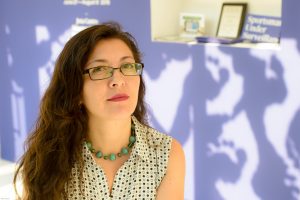
Tamara Toledo
Tamara Toledo is a PhD Art History and Visual Culture candidate at York University. Toledo is a Chilean-born Toronto-based scholar, curator and artist, graduate of OCAD University and holds an MFA from York University. Toledo is co-founder of the Allende Arts Festival and of Latin American Canadian Art Projects – LACAP. For over a decade, she has curated numerous exhibitions offering spaces and opportunities to artists of Latin American descent to showcase their work. She designed and has been curating the Latin American Speakers Series for which she has invited internationally renowned contemporary artists and curators to Toronto such as Gerardo Mosquera, Luis Camnitzer, Tania Bruguera, Alfredo Jaar, among many others to articulate and discuss issues of identity and intercultural dynamics in contemporary art. Toledo has presented her work at various conferences in Montreal, New York, Vancouver and Toronto. Her writing has appeared in ARM Journal, C Magazine, Fuse and Canadian Art. Her practice often follows an interdisciplinary approach and touches on notions of memory, identity, Latin American diasporas, transnationalism, issues of power, representation and international artistic-cultural interaction. Toledo is presently the Curator of Sur Gallery, the only space dedicated to contemporary Latin American art in Canada.
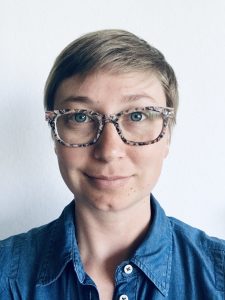
Jessica Zeglin
Jessica Zeglin uses sound, drawing, textiles, and installation to engage skills of attentiveness, listening, and care for ourselves, our human, and our other-than-human kin. Her work is field and research-based, combining perspectives from ecology, biology, fine art, craft art, and decolonial critique of these fields, with emphasis on the nuances of everyday life. She has shown work at the Weisman Art Museum, the Tamarind Institute, the University of New Mexico Art Museum, and in parks, plazas, city, and country, to audiences of many and audiences of one. Originally from rural and small-town Wisconsin, she is currently a candidate for the MFA in Art and Ecology at the University of New Mexico. You can see more of her work at www.jessicazeglin.com.
Blick Art Materials Student Scholarship
CAA Annual Conference Advocate Sponsor, Blick Art Materials supports four CAA student members with a $250 scholarship. The 2020 winners are:
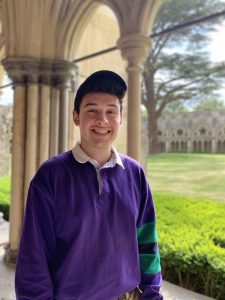
Noah Cox
Noah Cox is a third year, Art History student studying at New College of Florida. He has recently begun research for his baccalaureate thesis focusing on the art, architecture, and landscape of Bok Tower Gardens in Lake Wales, Florida. His undergraduate research in the past has focused on public art around the New College campus with a focus on student mural work. He currently works as an intern at the Sarasota Art Museum and is planning on furthering his career in the museum field.
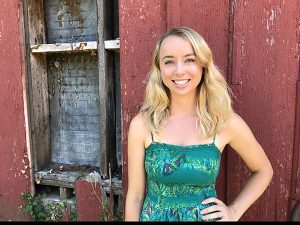
Amanda Kendrick
Amanda Kendrick is from Michigan where she received her BFA in Studio Art from Albion College in 2017. She is currently a second year Painting MFA student at Purdue University, where she teaches Foundations Drawing. Her work is rooted in familial relationships and childhood memories. She lives with her fiancé in Lafayette, Indiana.
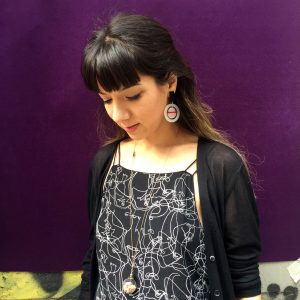
Defne Kırmızı
Defne Kırmızı is a PhD candidate Boston University in the History of Art & Architecture Department. Her dissertation focuses on the conceptual art practices and exhibition histories in Turkey between the years 1974-1994.
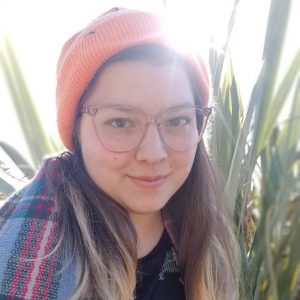
Anna Paluch
Anna (Ania) Paluch is a Polish-Canadian PhD student in Cultural Mediations at Carleton University, situated on unceded Algonquin territory in Ottawa, Canada. Her research focus is on Indigenous and Slavic Futurism, spaces of cultural hybridity, and post-memory in the diaspora, specifically around diasporic and mixed identity. She is a curator, mixed-media artist and co-director of the Indigenous+Diasporic Friendship Festival in Ottawa, connecting diasporic/immigrant communities with local Indigenous communities through art, academia and culture.
Criteria for the Scholarship
Awardees were chosen at random and fulfilled the following criteria:
- Individuals were registered for the Annual Conference by the Early Registration deadline
- Individuals are current CAA members with proof of student status
- Individuals did not receive conference registration or travel reimbursement from their institution or employer
We look forward to seeing you in Chicago next month! The 108th Annual Conference is February 12-15, 2020. Click here to explore the conference program.
Meet the 2019 Student Scholarship Winners
posted by CAA — Jan 25, 2019
with support from


For the third year in a row, CAA is proud to partner with our sponsors, multinational publisher, Routledge, Taylor & Francis, and art materials specialist, Blick Art Materials, on student scholarships to assist CAA student members with conference costs.
Routledge, Taylor & Francis Student Scholarship
CAA Annual Conference Premier Sponsor, Routledge, Taylor & Francis supports four CAA student members with a $250 scholarship. The 2019 winners are:
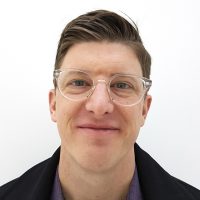
Jonathan Anderson
Jonathan Anderson is an artist and art critic, and is currently working on a PhD at King’s College London. His research focuses on modern and contemporary art, with a particular emphasis on its relations to religion and theology. He is the coauthor of the book Modern Art and the Life of a Culture: The Religious Impulses of Modernism (2016), and he has contributed to various books and journals, including essays on John Cage, Francis Alÿs, Kris Martin, Rachel Whiteread, and others.
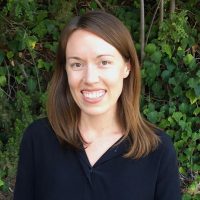
Noni Brynjolson
Noni Brynjolson is a PhD Candidate in Art History, Theory & Criticism at the University of California, San Diego. Her research analyzes socially engaged art projects in US cities. She is interested in looking at how artists address the politics of housing and gentrification through their work, as well as the informal communities that emerge within these projects. Noni is a member of the editorial collective of FIELD: A Journal of Socially Engaged Art Criticism, and her writing has been published in FIELD as well as in Hyperallergic, Akimbo, Geist and Craft Journal. She has also published chapters in two edited books: “From Mentorship to Collaboration: Art, Feminism and Community in Winnipeg” (in Desire Change: Contemporary Feminist Art in Canada, McGill Queen’s University Press, 2017), and “The Making of Many Hands: Artisanal Production and Neighbourhood Redevelopment in Contemporary Socially Engaged Art” (in Craft on Demand: The New Politics of the Handmade, I.B. Tauris, forthcoming 2019). Noni’s dissertation research was supported by a SSHRC doctoral fellowship, and she is currently a graduate fellow at UC San Diego’s International Institute as part of the 2018-19 Sawyer Seminar focused on the theme of ‘Reclaiming the City.’
Anton Lee
Anton Lee teaches in the Department of Art History, Visual Art and Theory at the University of British Columbia, Vancouver BC, where he completed his doctorate in November 2018. A specialist in the history and theory of photography, his work focuses on the contested understandings of the medium’s identities in European and Anglo-American countries from the early 20th century to the present. His current research prioritizes transforming his doctoral dissertation into a book, provisionally titled Nouvelle Photographie Amériaine: The Rise of Photographic Sequence in the United States and France, 1968–1989. Lee was the Kenneth J. Botto Research Fellow at the Center for Creative Photography in Tucson in 2016 and a Visiting Researcher at the Université Paris-Sorbonne in 2015.
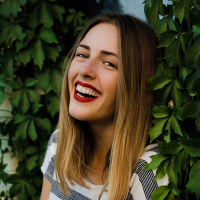
Candace Smith
Candace Smith currently studies Art History at the University of North Texas where she is working towards an MA under Dr. Nada Shabout in the field of Modern and Contemporary Art of the Middle East. Her current research explores issues of power, identity politics, and built space in the context of postwar Lebanese Art institutions and reconstruction (1990-present). Smith has presented and lectured on politics, power, and space, both as a university level and at the Texas Sculpture Symposium with NY-based artist Wafaa Bilal. She has also spent time abroad meeting and working directly with some of Beirut’s most prominent art collectors and foundations as well as emerging Beirut-based artists such as Hiba Kalache. Smith received a BA from Texas Tech University after completing undergraduate thesis work on 21st-Century street art created during times of conflict in central Cairo and the West Bank. Working directly with published photojournalists and prominent, local artists, Smith addressed local agency and perceptions of space in direct contrast with American and European activity in the area. Smith was the director of social media for AMCA and collaborated with Selections Magazine on their Winter 2018 Art Pages.
Blick Art Materials Student Scholarship
CAA Annual Conference Supporter Sponsor, Blick Art Materials supports four CAA student members with a $250 scholarship. The 2019 winners are:
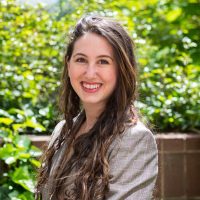
Margot Bernstein
Margot Bernstein is an advanced PhD candidate at Columbia University with a specialization in eighteenth-century art and material culture. Her dissertation, “Carmontelle’s Profile Pictures and the Things that Made Them Modern,” examines hundreds of portraits on paper by Louis Carrogis called Carmontelle (1717-1806), a French amateur draftsman. Margot holds a BA (2010) in art history and history from Williams College and an MA (2012) in the History of Art from the Courtauld Institute of Art. She also holds an MA (2014) and an MPhil (2015) in art history from Columbia University. In recent years, she has worked at the Metropolitan Museum of Art, the Frick Collection, the Morgan Library & Museum, the New-York Historical Society, the Calder Foundation, and the Williams College Museum of Art. Currently, Margot is a Chester Dale Fellow in the Department of Drawings and Prints at the Metropolitan Museum of Art.
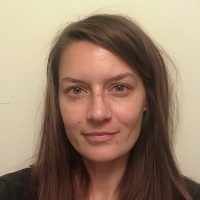
Jessica Crocker
Jessica Rae Crocker lives and works in Prescott, AZ. She is currently pursuing her PhD in Philosophy, Aesthetics, and Art Theory through IDSVA (Institute for Doctoral Studies in the Visual Arts). She is a ceramic artist focusing on the role of craft as a means to develop intimacy. Her recent work explores relationships and limerence through the use of imbedded interactive technologies. She works in both figurative and functional paradigms embracing the historical symbolism of the clay material in its many forms. This generous gift is allowing her to attend the CAA conference for the first time.
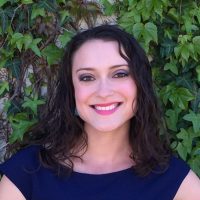
Kimberly Minor
Kimberly Minor is a doctoral candidate in Art History at the University of Oklahoma. Her research broadly focuses on American art, with interests in material culture, art of the early American West, and Northern Plains Indian drawings. Her dissertation “Pictographic Motifs: Memory and Masculinity on the Upper Missouri” engages the visual, material, and experiential sources of military imagery produced by the Mandan and Hidatsa during the early nineteenth-century. She studies how indigenous male identity was negotiated through constant confrontation (both physical and spiritual) with war and warriors, adding to a growing body of scholarship that emphasizes and affirms the importance of indigenous histories. Her research has been supported by the Smithsonian Institute of Museum Anthropology and the ACLS/Luce Dissertation Fellowship in American Art.
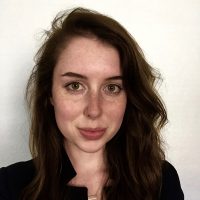
Laura Stowell
Laura Stowell is a third-year PhD Student in Art History at the University of Washington, Seattle. She received her MA in Contemporary Art from Sotheby’s Institute of Art, New York. Her research explores intersections of performance, affect, aesthetics, and trauma in art from 1945 to the present, with specific emphasis on feminist approaches to the body. In 2018 she presented a paper titled “Listening to the Body in Pain: Regina José Galindo’s (279) Golpes” at UC San Diego’s Graduate Visual Arts Symposium, and a paper titled “Pathography and the work of Alina Szapocznikow” at the Legacies of the Enlightenment Workshop at Michigan State University. She worked as the Curatorial Assistant at the Henry Art Gallery, Seattle, and plans on continuing to work in the curatorial field.
Criteria for the Scholarship
Awardees were chosen at random and fulfilled the following criteria:
- Individuals were registered for the Annual Conference by the Early Registration deadline
- Individuals are current CAA members with proof of student status
- Individuals did not receive conference registration or travel reimbursement from their institution or employer
We look forward to seeing you in New York City next month! The 107th Annual Conference is February 13-16, 2019. Click here to explore the conference program.
Meet the 2018 Student Scholarship Winners
posted by CAA — Jan 30, 2018
with support from


For the second year in a row, CAA is proud to partner with our sponsors, multinational publisher, Routledge, Taylor & Francis, and art materials specialist, Blick Art Materials, on student scholarships to assist CAA student members with conference costs.
Routledge, Taylor & Francis Student Scholarship
CAA’s Annual Conference Partner Sponsor, Routledge, Taylor & Francis supports four CAA student members with complimentary registration and an additional $250 in scholarship money to help with conference expenses such as travel, housing, or meals. The 2018 winners are:
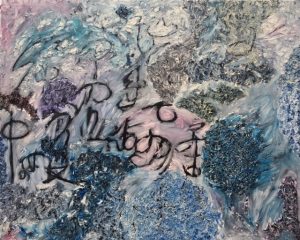
Painting by 2018 Scholarship Winner Patricia Chow, Outremer (detail), 2017
Patricia Chow
“Sustainability and Public Good,” MFA Exhibition at California State University, Los Angeles
Xinran Guo
Session: The Poetics and Politics of “Anonymous” Craft, February 21, 4:00 – 5:30 PM
Kira Jones
Session: He, She, and the In-Between: Reassessing Gender and Sexuality in Ancient Mediterranean Art, February 21, 8:30 – 10:00 AM
Chris Rioux
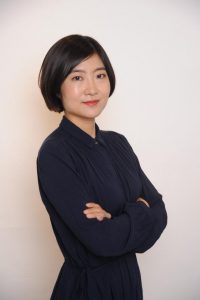
2018 Scholarship Winner Xinran Guo
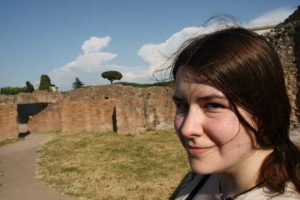
2018 Scholarship Winner Kira Jones
Blick Art Materials Student Scholarship
CAA’s Annual Conference Presenter Sponsor, Blick Art Materials supports conference registration fees for four CAA student members. The 2018 winners are:
Merih Cantarella
Session: The Elements and Elementality in Art of the Premodern World, February 21, 10:30 AM – 12:00 PM
Indie Choudhury
Session: New Directions in Black-British Art History, February 24, 4:00 – 5:00 PM
Alyssa Fridgen
Member of CAA Committee on Women in the Arts
Meeting: February 21, 10:00 AM -12:00 PM
Yi Yi Mon Kyo
Session: Making Things Modular, February 24, 8:30 – 10:00 AM
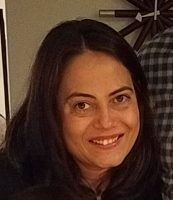 2018 Scholarship Winner Merih Cantarella |
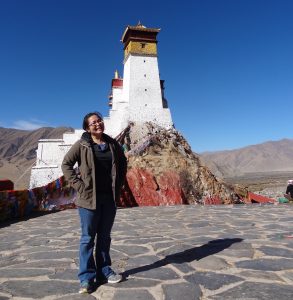 2018 Scholarship Winner Yi Yi Mon Kyo |
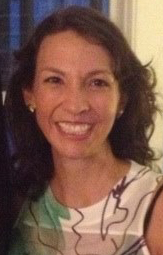 2018 Scholarship Winner Alyssa Fridgen |
See Us Pick the Winners at the CAA Offices
Criteria for the Scholarship
Awardees were chosen at random and fulfilled the following criteria:
- Individuals were registered for the Annual Conference by the Early Registration deadline
- Individuals are current CAA members with proof of student status
- Individuals did not receive conference registration or travel reimbursement from their institution or employer
We look forward to seeing you in Los Angeles! The 106th Annual Conference is February 21-14, 2018. Click here to explore the conference program.
Taking Down Public Art – What do Art Historians and Scholars Think?
posted by CAA — Aug 24, 2017
Public art, statues, and monuments have seldom been in the news more than in the past few weeks. Figures from Christopher Columbus to Robert E. Lee, from Peter Stuyvesant to Stonewall Jackson have been topics for debate. Regardless of one’s political or cultural point of view, nearly everyone seems to have an opinion.
We want to know what CAA members think about preserving or removing public works of art. How closely tied are a historical figure’s actions to a depiction of the person? How important are these pieces of public art to preserve? Should they be removed? Should they be destroyed? We want to know what you think and why.
We will compile the results of this form and report back CAA members’ thoughts and feelings on these monuments at this moment in history.
Scholars and Artists Impacted by Travel Ban
posted by admin — Feb 02, 2017
Like many around the world, CAA is concerned with the direction the current US government has taken with regard to international travel in and out of the United States. We view this as having a potentially chilling effect on artistic and academic freedoms. CAA has taken a stand in strong opposition to the current executive order.
However, we would like to do more if we can. If you are planning to attend the 2017 Annual Conference from another county and have been impacted by the travel ban we ask that you contact us immediately. Email our membership department or call 212-691-1051, ext. 1. We will endeavor to assist you in any way we can.
You may also use this Google Form to submit a query if you have been impacted by the immigration ban.
Complimentary Conference Registration + $250 Scholarship
posted by CAA — Nov 21, 2016
with support from


Registration is in full swing for the 2017 Annual Conference in New York, February 15-18.
We are always listening to what our members want and seeking out the benefits to fit your needs. That is why we have partnered up our sponsors, multinational publisher, Routledge, Taylor & Francis, and art materials specialist, Blick Art Materials, to create a student scholarship fund to assist CAA Student Members with conference costs.
Routledge, Taylor & Francis Student Scholarship
CAA’s Annual Conference Partner Sponsor, Routledge, Taylor & Francis will award four (4) CAA Student Members with complimentary registration and an additional $250 in scholarship money to help with conference expenses such as travel, housing, or meals. Receipts will be required for reimbursement.
Blick Art Materials Student Scholarship
CAA’s Annual Conference Presenter Sponsor, Blick Art Materials will also fund conference registration fees for four (4) CAA Student Members. No travel expenses are available.
Criteria for the Scholarship
Awardee will be chosen by lottery on the following criteria:
- Individuals must be registered for the Annual Conference by the Early Registration deadline
- Individuals must be current CAA student members (proof of student status will be required by the 8 winners chosen)
- Individuals cannot receive conference registration or travel reimbursement from their institution or employer
What does this mean for you? It means register today for the 2017 Annual Conference before the Early Registration deadline for a chance to be one of the lucky 8 CAA Student Members to receive one of these scholarships. Recipients will be randomly selected by CAA and announced in mid January.
We look forward to seeing you in New York!
Case Studies and Examples for Evaluating Digital Scholarship
posted by michelle — Feb 23, 2016
Strong case studies of digital humanities scholarship exist, and compelling resources continue to proliferate. Scholarly societies, including the American Historical Association (AHA), Modern Language Association (MLA), and more recently the College Art Association (CAA), and Society of Architectural Historians (SAH) have developed guidelines for use by institutions and individuals. Funded by a grant from the Andrew W. Mellon Foundation, CAA and SAH formed a joint task force that explored existing guidelines and literature, surveyed faculty and administrators, and developed Guidelines for the Evaluation of Digital Scholarship in Art and Architectural History. Adopted by the boards of both societies, the guidelines are available for download on the SAH and CAA websites and we encourage their adoption and use. The task force reviewed many resources in the course of eighteen months. Some of these are described below to provide a context for current digital evaluation in addition to the recently published CAA/SAH guidelines.
Sources such as the Journal of Interactive Pedagogy and Pedagogy and Manifold Scholarship, and sites such as Mapping Gothic France, HyperCities, and ArtHistoryTeachingResources.org are places where digital scholarship is being practiced, peer reviewed, and successfully included in promotion and tenure portfolios. Benchmark portals such as the NINES (Networked Infrastructure for Nineteenth-Century Electronic Scholarship) NEH Summer Institutes (Storify of the proceedings can be found here) offer useful white papers: “Digital Humanities Scholarship: Recommendations for Chairs in Language and Literature Departments“; “Guidelines for Promotion and Tenure Committees in Judging Digital Work”; and “Statement on Authorship.” Kristine M. Bartanen’s excellent “Digital Scholarship and the Tenure and Promotion Process“ contains valuable guidance. Published to Academic Commons in July 2014, Bartenan provides a comprehensive literature review and resource portal for the evaluation of digital scholarship. The review contains both model guidelines for promotion and tenure and appendices for a range of resources, literature, and organizations pertinent to understanding and developing evaluation methods.
In the fall of 2012 the Journal of Digital Humanities published their fourth issue, which centered on the “importance of assessment and the scholarly vetting process around digital scholarship.”[1] (The full journal issue can be accessed here.) The issue addresses the need for guidelines and dialogue for assessing digital scholarship in the humanities, offers case studies and examples, and reflects on the successes, issues, and failures of the methods employed. Though much of the content is not art or architectural history-specific, it is still relevant to CAA’s and SAH’s memberships. A broad overview of the contents of this journal issue is provided below so that readers can zero in on the material most germane to their own needs. Readers are encouraged to make use of the excellent bibliographies attached to each of the issue’s essays.
The issue is divided into four major sections: “The Problem Stated,” “Approaches,” “Institutional Guidelines,” and “Resources.” In the introductory section of “Living in a Digital World: Rethinking Peer Review, Collaboration, and Open Access,” Sheila Cavanagh highlights the importance of retraining processes and expectations of evaluation around digital scholarship, including “encouraging faculty who hire, tenure, and mentor junior scholars to acknowledge the complicated factors in the world of digital scholarship . . . for example, faculty often have difficulty identifying appropriate experts to participate in more traditional peer review processes.”[2] In “Evaluating Collaborative Digital Scholarship (or, Where Credit is Due),” Bethany Nowviskie highlights the inability of many humanities evaluative committees to adequately understand and appropriately review and reward the type of collaborative work that digital scholarship is often predicated upon. She contends that “the T&P [tenure and promotion] process is a poor fit to good assessment (or even, really, to acknowledgement) of collaborative work, because it has evolved to focus too much on a particular fiction. That fiction is one of ‘final outputs’ in digital scholarship.”[3]
The “Student Collaborators’ Bill of Rights“ from UCLA’s Digital Humanities program provides important guidance about how to understand, review, and reward collaborative digital humanities scholarship, especially in light of hierarchies of power experienced by student and “alt-ac” collaborators.[4] Nowviskie hails certain aspects of the AHA Guidelines for Evaluation of Digital Scholarship, particularly their underscoring of collaborative digital work as a type of perpetual peer review. At a National Endowment for the Humanities “Off the Tracks” workshop in 2011, Nowviskie, Matt Kirschenbaum, Doug Reside, and Tom Scheinfeldt collaborated on a provocative “Bill of Rights” for collaborators that might serve as a guidepost for promotion and tenure committees to consider. In Nowviskie’s words, “We drew on our experience administering MITH [Maryland Institute for Technology in the Humanities], the Scholars’ Lab, and the Roy Rosenzweig Center for History and New Media—three centers that are sites for a great deal of collaboration among people who may have similar backgrounds as scholars and technologists, but whose formal institutional status may vary a great deal. We drafted something we called a ‘Collaborators’ Bill of Rights,’ which was later endorsed by the full workshop assembly and posted for public comment. Basically, it’s an appeal for fair, honest, legible, portable (this is important!), and prominently displayed crediting mechanisms. It also offers a dense expression of underlying requirements for healthy collaboration and adequate assessment from the point of view of practicing digital humanists, with special attention to the vulnerabilities of early-career scholars and staff or non-tenure-track faculty.” Their recommendations are as follows:
- Committees must consider not only the products of digital work but the processes by which the work was (and perhaps continues to be) co-created;
- Scholars (even while they ask to have their critical agency as individuals taken seriously in tenure and promotion cases) are obligated to make the most generous and inclusive statements possible about the contributions of others;
- Credit should be expressed richly and descriptively, but also in increasingly standardized forms, legible within a variety of disciplines and communities of practice;
- We must negotiate expressions of shared credit at the outset of projects and continually, as projects evolve;
- We must promote fair institutional policies and practices in support of shared assertion of credit, such as those which make collective and individual ownership over intellectual property meaningful and actionable;
- And, finally, we must accept that collaborators themselves, regardless of rank or status, have the ultimate authority and responsibility for expressing their contributions and the nature of their roles.
Other relevant literature includes Todd Presner’s essay “How to Evaluate Digital Scholarship,” directed at the audiences within the art and architectural history-specific community: “The document is aimed, foremost, at Academic Review Committees, Chairs, Deans, and Provosts who want to know how to assess and evaluate digital scholarship in the hiring, tenure, and promotion process. Secondarily, the document is intended to inform the development of university-wide policies for supporting and evaluating such scholarship.”[5] Presner offers a succinct and clear checklist for promotion and tenure boards, engaging them in dialogue around initial review, crediting, intellectual rigor, impact, peer review, and experimentation, among other topics.
Geoffrey Rockwell’s “Short Guide to Evaluation of Digital Work” deepens and extends Presner’s checklist in compelling and practicable ways, and Laura Mandell’s essay “Promotion and Tenure for Digital Scholarship” offers a useful and clear coda full of concrete examples such as the HyperCities project and Voyant, a software text analysis tool. It is not overstating the importance of these three essays alone to suggest that every promotion and tenure board member might be asked to read them to educate themselves on the shifting boundaries of their discipline, and the ways in which their analysis of promotion and tenure portfolios must change and adapt. In addition, in the third section of the journal issue, the MLA’s Guidelines for Evaluating Work in Digital Humanities and Digital Media is similarly designed to “help departments and faculty members implement effective evaluation procedures for hiring, reappointment, tenure, and promotion. They apply to scholars working with digital media as their subject matter and to those who use digital methods or whose work takes digital form.”[6]
James Smithies’s essay “Evaluating Scholarly Digital Outputs: The Six Layers Approach” offers a different style of checklist, a bird’s-eye view of the different types of digital scholarship output, but one that is most useful if the reader—part of a promotion and tenure board or otherwise—is already informed about and open to considering digital scholarship on par with analog modes. Katherine D. Harris’s “Explaining Digital Humanities in Promotion Documents” is a comprehensive and fruitful overview of her foray into learning “how best to sell Digital Humanities, scholarly editing, and Digital Pedagogy to my colleagues.”[7] Harris, associate professor of English literature at San Jose State University, shares her statement for promotion and her approach to the practical question of formatting and outlining her digital scholarship as part of her promotion and tenure binder. With few models to consult, she crowdsourced her questions via Twitter and other channels in order to produce her promotion and tenure document, finally settling on a narrative-based approach that outlines her own collaborative and individual contributions to the field, and includes examples of her concrete research and pedagogy projects in progress and completed, publications, conferences, and supporting quotations from the Digital Humanities Community Wiki and Digital Humanities Now.
While every essay in the fall 2012 Journal of Digital Humanities issue is well worth consultation, the final resource to flag is the MLA’s “Evaluation Wiki of the Committee on Information Technology.” This report takes the form of a checklist of documents that digital scholars should amass as part of preparation for promotion and tenure, and it might be used in tandem with Harris’s model statement.
Both CAA and SAH leadership teams encourage the wide dissemination and adoption of the newly published guidelines, as well as a CAA 2017 panel or forum models that facilitate questions, feedback, and discussion around the issues raised.
Michelle Millar Fisher is a doctoral candidate in Architectural History at the CUNY Graduate Center and a Curatorial Assistant in the Department of Architecture and Design at The Museum of Modern Art.
[1] Daniel J. Cohen and Joan Fragaszy Troyano, “Closing the Evaluation Gap,” Journal of Digital Humanities vol. 1, no. 4 (Fall 2012): i. They continued: “As digital humanities continues to grow and as more scholars and disciplines become invested in its methods and results, institutions and scholars increasingly have been debating how to maintain academic rigor while accepting new genres and the openness that the web promotes.”
[2] Ibid, 9.
[3] Ibid, 17.
[4] Authored by Haley Di Pressi, Stephanie Gorman, Miriam Posner, Raphael Sasayama, and Tori Schmitt, with contributions from Roderic Crooks, Megan Driscoll, Amy Earhart, Spencer Keralis, Tiffany Naiman, and Todd Presner, this document endorses the Collaborators Bill of Rights, developed during the workshop “Off the Tracks—Laying New Lines for Digital Humanities Scholars” held at the Maryland Institute for Technology in the Humanities (MITH), January 20–21, 2011, and described below. The UCLA document adds principles to safeguard students when working on projects with scholars who are senior to them.
[5] Ibid, 36.
[6] Ibid, 91–94.
[7] Ibid, 71.



